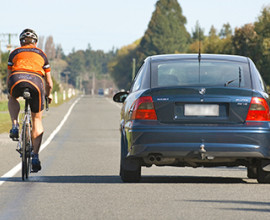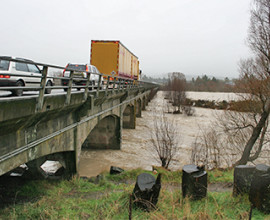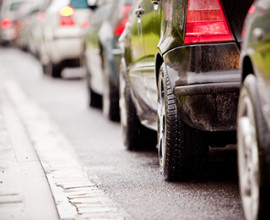Freight
Canterbury produces around 57 percent of the South Island's GDP, so it's important that we have a resilient and reliable freight network. The region is a major hub of production and manufacturing and over 40 million tonnes of freight is moved around every year.
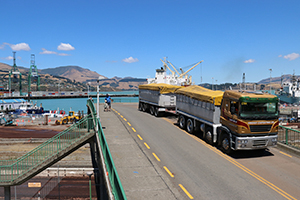 Nineteen percent of the total area farmed in New Zealand is in Canterbury, and we produce a diverse range of primary produce, from crops, to sheep, beef and dairy products. The increase in dairy farming over the past 20 years has contributed to increased freight movements on our rural roads, as milk must be moved off farms, generally by truck.
Nineteen percent of the total area farmed in New Zealand is in Canterbury, and we produce a diverse range of primary produce, from crops, to sheep, beef and dairy products. The increase in dairy farming over the past 20 years has contributed to increased freight movements on our rural roads, as milk must be moved off farms, generally by truck.
We also manufacture everything from transport and machinery equipment to food and beverage products. Efficient freight networks are required to support this manufacturing activity, allowing the inputs to the manufacturing process to be sourced and sent to customers around New Zealand and overseas.
Key types of freight
We need to be able to move the goods we produce and import around the region efficiently.
Currently, over 90 percent of freight in the South Island is moved by road, with only a small percentage being moved by rail, coastal shipping or air.
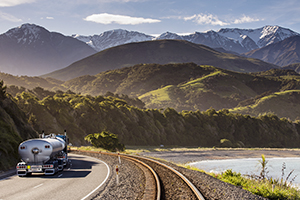 Canterbury has 1,330 kilometres of State Highways and 14,640km of local roads.
Canterbury has 1,330 kilometres of State Highways and 14,640km of local roads.The majority of freight in the region is transported via road, whether that be milk moving from farmgate to the dairy factory, or other goods travelling via the state highway network.
 Air freight carries less than one percent of New Zealand's trade by volume, but about 16 percent of exports and 22 percent of imports by dollar value.
Air freight carries less than one percent of New Zealand's trade by volume, but about 16 percent of exports and 22 percent of imports by dollar value.Air transport is critical for the export and import of certain goods including high-value / fresh goods, like flowers and seafood, and for receiving time-sensitive imports, such as medical supplies.
Most South Island international air freight services leave via Christchurch International Airport. Canterbury also has a domestic airport in Timaru.
Approximately 99 percent of the country's trade by volume and 80 percent by value is carried by sea.
Canterbury has two ports:
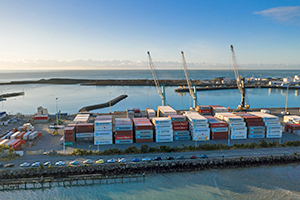 The larger of the two is Lyttelton Port Company (LPC) in Christchurch, which provides handling and stevedoring services for containers and bulk cargo. LPC handles a wide range of cargo, from fishing and grain to cement, cars and coal exports. LPC also operates two inland port sites at Woolston and Rolleston.
The larger of the two is Lyttelton Port Company (LPC) in Christchurch, which provides handling and stevedoring services for containers and bulk cargo. LPC handles a wide range of cargo, from fishing and grain to cement, cars and coal exports. LPC also operates two inland port sites at Woolston and Rolleston.- PrimePort (Port of Timaru) is Canterbury's second port and handles mostly containerised freight, cement and fertiliser. It acts as a feeder to the Port of Tauranga in the North Island. It also operates an inland port site in Rolleston.
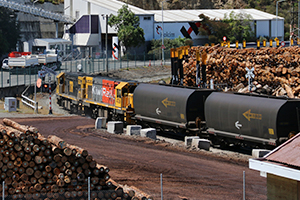 The region has around 650km of rail network, providing links to Picton along the Main North Line, Dunedin and Invercargill along the Main South Line, and the West Coast along the midland line.
The region has around 650km of rail network, providing links to Picton along the Main North Line, Dunedin and Invercargill along the Main South Line, and the West Coast along the midland line.These lines are mainly used for moving containerised freight and bulk commodities, such as logs and coal.
The below graph shows rail freight movements to, from and within Canterbury.
Strategic issues impacting the freight sector
Ensuring the smooth, efficient and reliable transportation of goods is vital to our region.
A number of factors are expected to impact on freight volumes and the ability to transport goods around and between regions. These include:
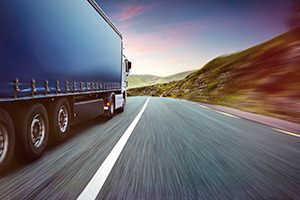
Reducing transport sector emissions is emerging as a major strategic driver of both central and local government investment in the transport network over the next 20 to 30 years. The National Emissions Reduction Plan suggests a 35 percent reduction in greenhouse gas (GHG) emissions from freight is required by 2035 to put the country on a pathway to net zero emissions by 2050.
With a steadily increasing South Island and national freight task, and without any new interventions, greenhouse gas emissions from heavy vehicles in NZ will peak much later than for light vehicles (as late as 2030).
Achieving freight mode shift to rail and coastal shipping is seen as a key part of the solution, as well as a transition to zero-emission heavy vehicles.
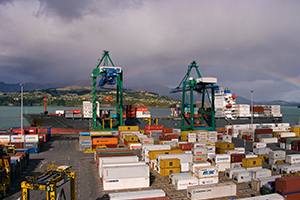
COVID-19 has highlighted our reliance on, and vulnerability to, disruptions in international freight services, across both sea and air.
A shift towards a hub and spoke model and working more effectively across transport modes is a key part of the solution. However, the lack of a sector-wide view is limiting opportunities for change.
The government is developing a freight and supply chain strategy to address supply chain resilience and other freight issues.
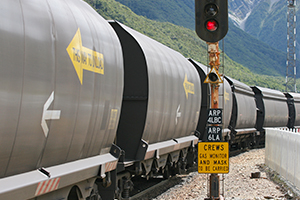
Improving the efficiency of our supply chain includes opportunities to optimise freight routes, equipment, and vehicles, and to make better use of data and supporting information sharing, and collaboration.

Canterbury accounts for approximately half the freight moved around the South Island.
As much as 87 percent of freight is carried within South Island regions rather than between them, and general freight volumes are expected to grow considerably in coming years, highlighting the need to ensure our regional freight networks are robust, resilient, fit for purpose and reliable.

Nationally, coastal shipping carries around 3.5 percent of New Zealand's total freight task and there are opportunities to grow this.
The government recently invested $30 million into securing an additional four or more coastal shipping services as part of efforts to bolster the coastal shipping network.
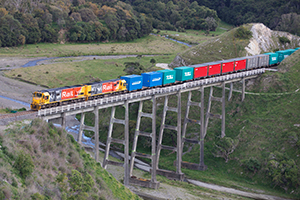
The government is investing heavily in rail, including improving the rail network, reducing emissions from rail, and adding 20 to 40 new locomotives to the South Island.
The iReX – Inter-Island Resilience Connection project will more than double the rail freight capacity on the Interislander ferries and will reduce the transit time for rail between the North and South Islands by a full day.
Supporting future freight growth
 South Island forecasts project substantial freight growth with an extra 47.7 million tonnes of freight being carried in 2042 compared with 2012. This equates to an additional 1.7 million truck trips per annum.
South Island forecasts project substantial freight growth with an extra 47.7 million tonnes of freight being carried in 2042 compared with 2012. This equates to an additional 1.7 million truck trips per annum.
The main work undertaken by the Regional Transport Committee on freight has been to work with the South Island Regional Transport Committee Chairs Group to support better freight options.
Learn more about the South Island-wide freight challenges and priorities.

